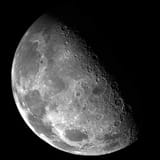Moon Monday #228: The need for resilience in private lunar landing missions through expansive and collaborative testing
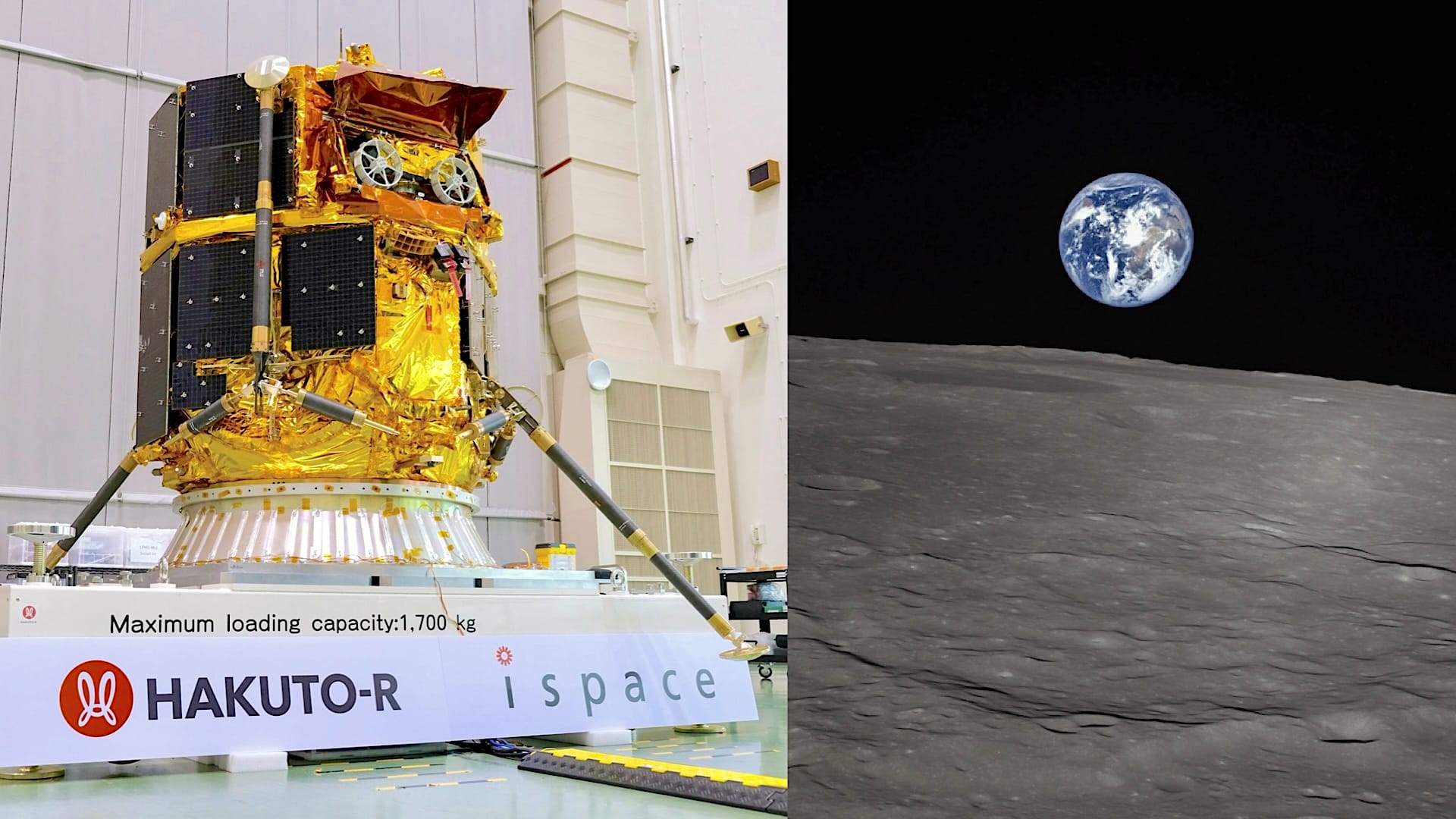
ispace Japan’s second Moon lander RESILIENCE launched in January with the aim of a Moon landing. But just like its predecessor Hakuto-R’s fate about two years ago, RESILIENCE crashed into the Moon during its landing attempt on June 6. It was a moment of heartbreak for several lunar communities and space enthusiasts around the world. It’s also a moment to reconsider resilience in lunar exploration through expansive and collaborative lunar lander testing for private missions.
While ispace’s first lunar lander ultimately failed due to its navigation software rejecting correct altitude readings from the Moon provided by the laser rangefinder onboard, RESILIENCE failed differently. The latter’s rangefinder readings were correct only later in the descent around a kilometer above the surface. The lander thus hadn’t slowed down enough by the time it approached the Moon’s surface, crashing into it rather than gently landing. ispace Japan’s CTO Ryo Ujiie noted during the post-landing-attempt media briefing that RESILIENCE used a different rangefinder than on the first mission (M1) because the vendor had discontinued the earlier model.
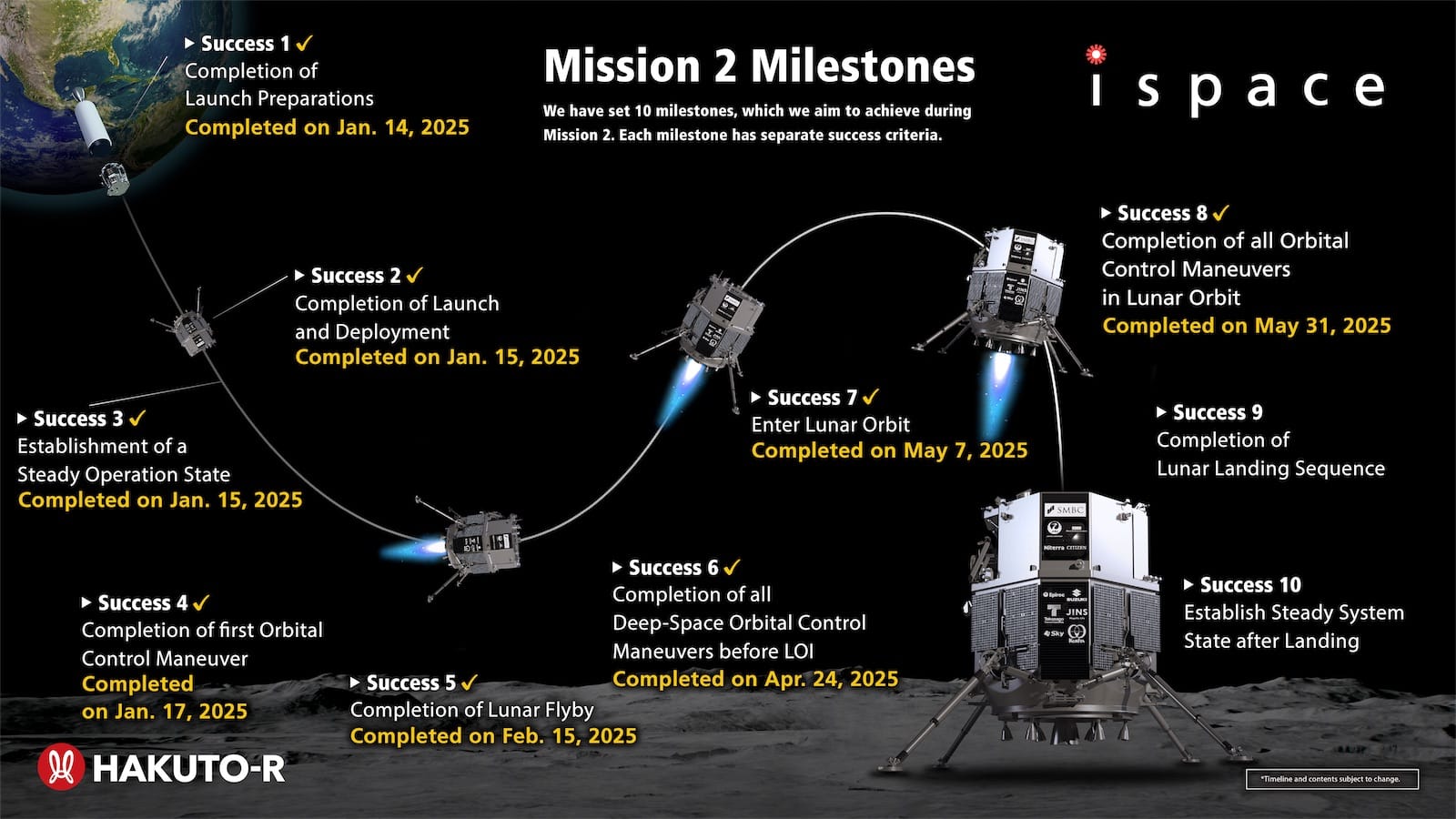
Testing the limits of resilience
As always, we will know the root cause(s) of the M2 mission’s failure and its extent only after engineers conduct a detailed failure investigation. That’s always been the case for all major spacecraft failures. And yet it didn’t deter media reports and social media posts from continuing to confidently “explain” the events of RESILIENCE based on lander telemetry from the livestream alone—despite us learning about the unreliable rangefinder readings from ispace itself mere hours after the landing attempt. And so, instead let’s discuss an underlying point about the testing regime of Moon landers through what is admittedly speculation on RESILIENCE.
Note that RESILIENCE began its descent to the lunar surface from its circular orbit of ~100-kilometer altitude. It’s a much higher starting point than those of contemporary landers; India’s Chandrayaan 3, the US-based Firefly’s Blue Ghost, and JAXA’s SLIM lander began their descent from 30, 20, and 15 kilometers above the lunar surface respectively. Depending on the operational extent of the specific laser rangefinder ispace used, choosing a lower orbital profile to start RESILIENCE’s descent from could’ve allowed ispace to test the rangefinder before diving in. This would’ve provided mission operators a warning that the rangefinder wouldn’t be relaying accurate readings, at least at that high altitude, and may have allowed them to design some workarounds. Now, to be fair, such an orbital profile might have been unfeasible in RESILIENCE’s case, or simply too risky given uneven lunar gravity. Or it may not have given RESILIENCE sufficient time to adapt while in orbit after all since the rotating Moon would increasingly steer its carefully chosen lava plain landing site away from reach.
Regardless, the point is that conducting operational checkouts of the laser rangefinder before attempting to land was probably missing from RESILIENCE’s in-space testing regime. For example, ISRO’s Chandrayaan 3 lander performed such checkouts with its propulsion module after the two separated from each other in lunar orbit. And so the lander’s altitude above the lunar surface didn’t matter as much.
Prior to RESILIENCE’s launch, ispace had told me in an email response that to improve the chances of a successful touchdown, the company has conducted extensive field testing of landing sensors in lunar-like environments at multiple locations around the world. This is over and above the improvements across subsystems which ispace identified after flying its first Moon mission to feed into RESILIENCE. Despite that, the rangefinder has clearly missed the mark. It again goes to show that you can only know your particular spacecraft’s behavior once it is in space. And that’s also why for its SLIM lander, JAXA tested its crucial crater recognition system while in lunar orbit before SLIM attempted and achieved its goal of landing on the Moon with precision.
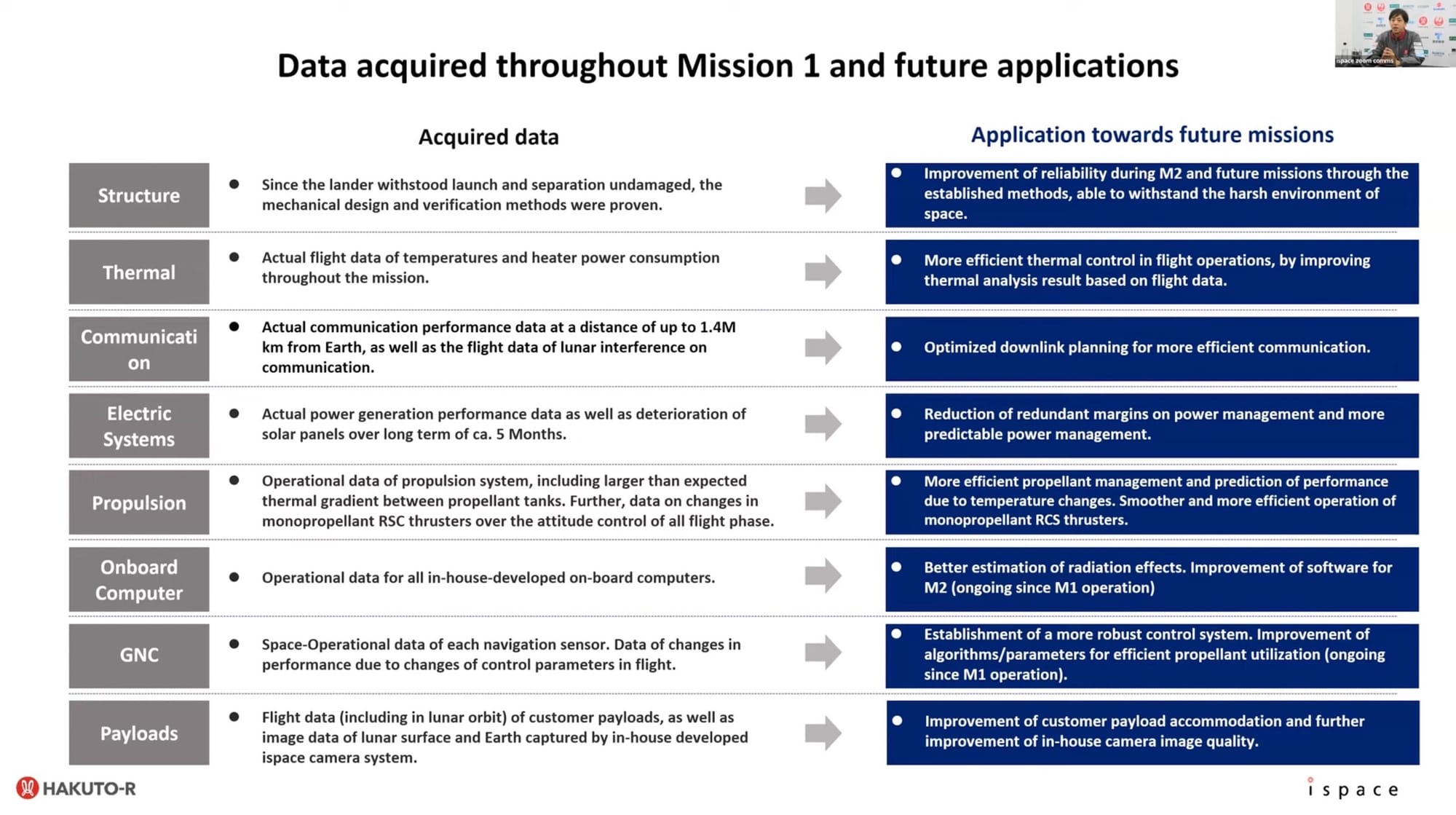
Complex balance
Moon landings remain hard; and a truly comprehensive testing regime non-optional for success. Note the following about four recent Moon landing attempts.
- ISRO attributes emphasis on demonstrating the lander system’s performance down to its specifics as the principal reason for Chandrayaan 3’s triumphant touchdown on the Moon after Chandrayaan 2’s failure.
- Both of Intuitive Machines’ landers part of NASA’s CLPS program hard-landed on the Moon due to inadequate testing and checkouts of their laser rangefinders.
- Astrobotic’s first CLPS lander Peregrine failed because of skipping comprehensive launch environmental testing of its propulsion system.
- In contrast, Firefly proactively kept ample margins in terrestrial testing as well as for spaceflight deviances and anomalies to achieve Blue Ghost’s soft landing for NASA CLPS earlier this year.
As indispensable as comprehensive testing is, another hard fact is that private companies don’t have the kind of high budgets or time afforded by government space agencies. This necessarily implies lesser overall redundancy in their robotic lander designs as well as a testing regime that’s always battling cost and schedule—all leading to greater risks. Even fuel margins on privately built landers tend to be on the lower side because every kilogram of added fuel reserve would take away at least several hundred thousand dollars worth of commercial payload capacity. But alas, the closer a lander is to the surface during lunar descent, the lesser its ability to self-correct with depleting fuel reserves.
Such complex balance of testing and resources is why I agree with remarks made by the Open Lunar Foundation (a Moon Monday sponsor) after the RESILIENCE mission’s outcome:
Rather than one agency attempting seven landings, a growing number of new actors are launching their first or second attempts. Instead of hard won lessons flowing freely into the next mission, knowledge is often siloed, treated as proprietary by agencies and companies, and so potentially avoidable mistakes can resurface. [...] Collaboration becomes critical to ensure that tens of millions of dollars of investment and years of work aren’t lost in the final seconds of flight. The more we can share data from these attempts, the more return humanity as a whole makes on these investments. The Moon is hard, but there is no reason to make it harder.
We must encourage companies and organizations to share technical data for safety and success of all.
Tenaciously transparent
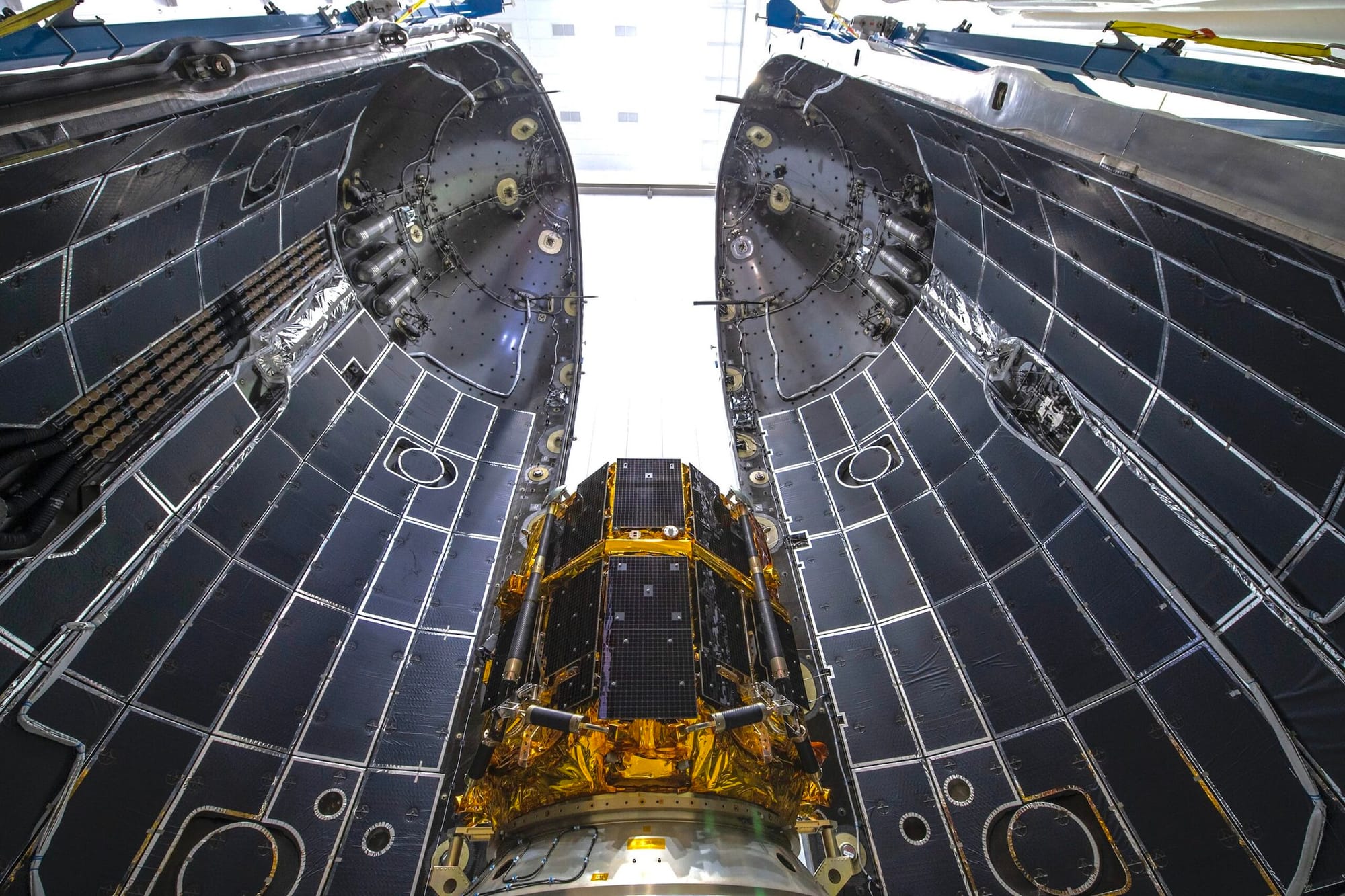
RESILIENCE’s crash landing means its multiple payloads have been lost too, most notably the 5-kilogram micro-rover built by ispace’s European subsidiary under an ESA contract with funding aid from the Luxembourg Space Agency. Called TENACIOUS, the rover was supposed to explore and image the Moon’s surface in HD, and use a back-mounted shovel to collect lunar soil and transfer its ownership to NASA as part of the latter’s move to set precedence for future resource use under the US-led Artemis Accords. Alas, these opportunities have succumbed to harsh lunar dust.
Jeff Foust has previously reported that ispace got a $22 million payout for its first crashed Moon mission through insurance brought from Mitsui Sumitomo. We’ll get to know later this year what ispace receives for its second failed attempt. Looking ahead, ispace Japan’s CFO Jumpei Nozaki told CNN that the company has the funding necessary to attempt a third lunar landing. That would be the company’s US subsidiary’s first CLPS mission through US-based Draper Laboratory. It’s targeting landing on the Moon’s farside in 2027, carrying NASA payloads onboard as well as another rover from ispace Europe. ispace US will also provide ground communications and relay services for the mission.
Between the capital intensive nature of building Moon missions and the ispace-provided CLPS lander having to be wholly redesigned, and even go through a late engine swap, ispace Japan has had to raise a huge amount of funds. To its credit, the publicly traded company has always announced these upfront. Such financing has taken the form of $35 million and $70 million in loans this year, and $62 million and $45 million last year. Jeff Foust reported in March 2024 that ispace then raised $53.5 million through a stock sale, $47 million of which was to be used for the Draper-led CLPS mission. ispace’s share of Draper’s $77 million CLPS contract is supposedly $55 million. Note though that all of these amounts, along with a $80 million Japanese government grant, do include funds for ispace Japan to launch a fourth lunar lander by 2027, and so aren’t just for the CLPS flight.
Contrast ispace’s impeccable transparency with CLPS vendor Intuitive Machines. Despite both of them being publicly traded companies, ispace has transparently published mission objectives before launch as well as accepted outcomes of both its lunar missions on the same day as the landing attempts with unusual candidness. Whereas Intuitive—and NASA as its CLPS flight enabler and partner—retrospectively skewed the success criteria for the company’s first Moon mission and even straight up falsely proclaimed it to be a “soft and safe landing” and an “unqualified success”. Intuitive continued to use intentionally fuzzy language to claim success for its second hard Moon landing despite the mission hosting more than $100 million worth of US taxpayer money through NASA whose goals weren’t met. The value of ispace Japan too gets affected as a publicly traded company, and yet they face it with more honest, upfront communications. That is true resilience.
Many thanks to The Orbital Index and Sanket Suman Dash for sponsoring this week’s Moon Monday! If you too appreciate my efforts to bring you this curated community resource for free and without ads, support my independent writing. 🌙
Two new European Moon missions

ispace utilized five of ESA’s Estrack network ground stations to command and hear back from RESILIENCE throughout its mission. This partnership is now growing as ispace’s European subsidiary along with five of its also-European institutional partners have won an extended ~€2.7 million ESA contract to collaborate with the European Space Agency on the MAGPIE mission. It’s a rover to study water ice and other volatiles deposited on the Moon’s south pole. MAGPIE stands for Mission for Advanced Geophysics and Polar Ice Exploration.
The mission is being assessed for flight as part of ESA’s 2023 call to the European industry, asking it to propose small and medium Moon mission concepts that can fly starting by 2028. As long as each mission stays under €50 million, and focuses on ESA’s lunar exploration and science goals, any physical form goes: an orbiter, a (presumably small) lander, a flyby craft, a rover, what have you.
As one way to stay within budget, ESA encouraged mission proposals to leverage a rideshare launch on Europe’s Ariane 6 rocket, specifically using several lunar-ward trajectories to that end including possible aids with a kick-stage. ESA also suggested spacecraft use its upcoming Moonlight navigation and communications service to reduce the mass of the onboard communications system and save mission costs.
Relatedly, ESA approved the LUnar Meteoroid Impacts Observer (LUMIO) CubeSat mission last year. As its name suggests, LUMIO will monitor flashes of meteorite impacts on the Moon’s farside to determine its poorly constrained rate and potential impact (pun intended) on long-term robotic and crewed exploration. ESA aims to launch LUMIO in 2027 to the second Earth-Moon Lagrangian point (EM-L2) from where it can continuously observe the Moon’s farside. The CubeSat also aims to demonstrate autonomously determining its position in space and navigating accordingly, independent of communications with Earth, something China pioneered with its DRO lunar craft recently.
More Moon
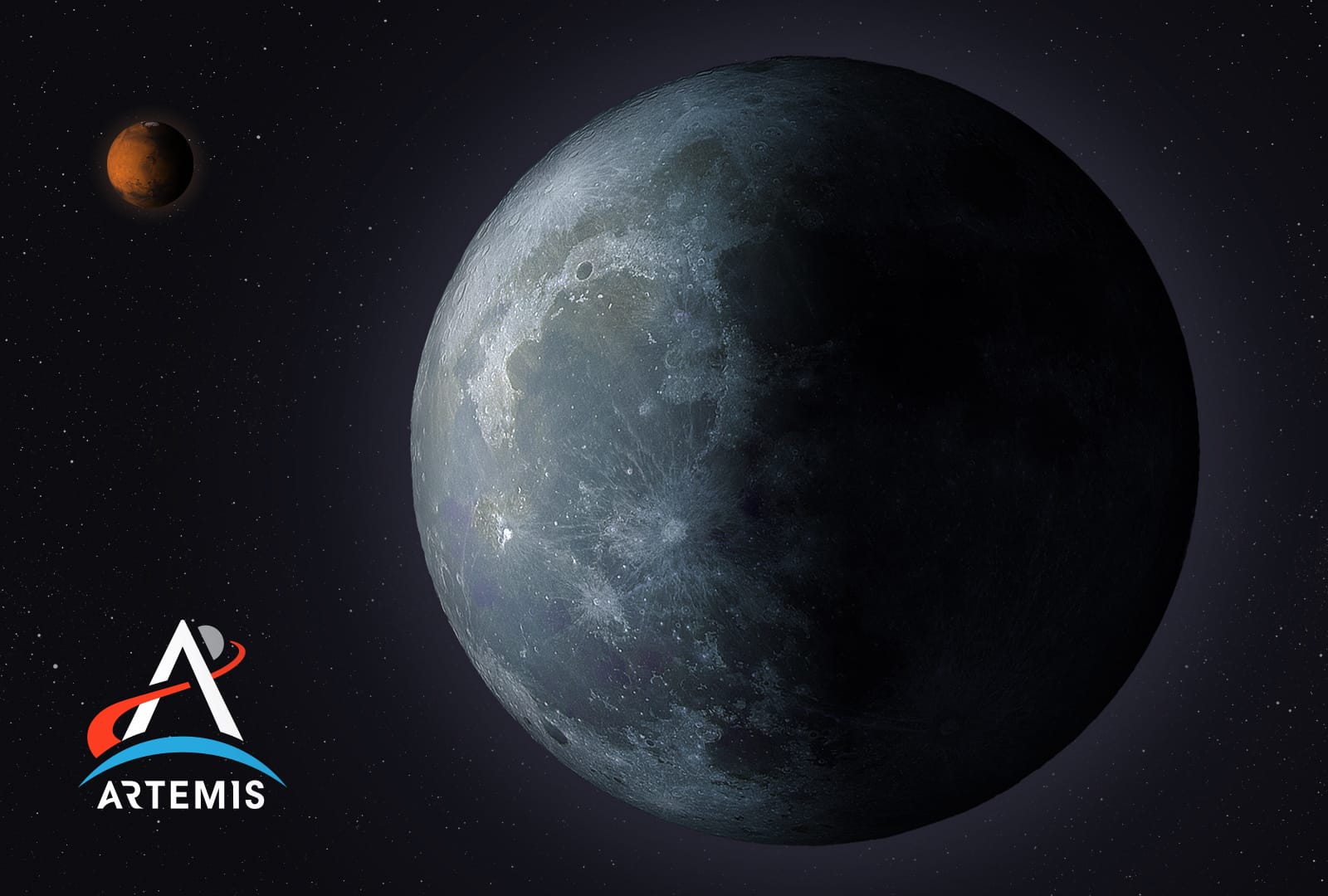
- In response to the Trump’s administration’s FY2026 presidential budget request for NASA slashing the SLS rocket, Orion spacecraft, and the NASA-led international Gateway orbital habitat programs right after the upcoming crewed Artemis III Moon landing, the US Senate is trying to propose and pass a supplementary $10 billion fund for NASA to continue those projects instead.
- Amid these larger proposed cuts for NASA, people seem to have missed some finer cuts affecting four forward-looking Moon projects: the oxygen extractor mission, Decadal science efforts, an advanced instruments program, and the THEMIS-ARTEMIS spacecraft.
- In the meanwhile, NASA is pulling its support for the long-running, community-oriented Lunar and Planetary Science Conference, one of the largest gatherings of planetary scientists in the world.
- Notable Chandrayaan updates from last month
